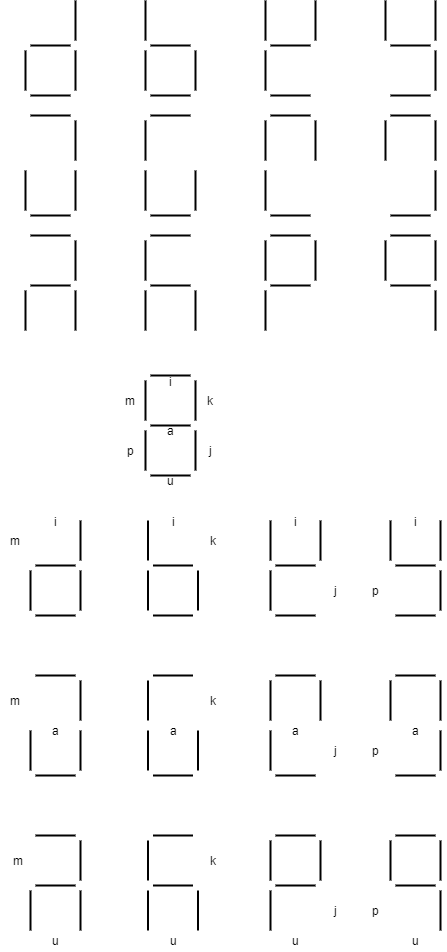Duodecimal
It would be good to have names and numerals for base 12 numbers, principally for use for time of day.
The dozenal society and others have proposed extra numerals and names to represent 10 and 11, such 2 and 3 turned upside down, named “dek” an “el”.
Let’s go a step further to have a dedicated duodecimal numbering system,
with graphemes and phonemes distinct from the decimal numbers.
The benefit is to be able to know the numeric base instantly.
Ideally we’d have the same phonemes available for use in every language.
However, it seems that there are not phonemes common to every language.
So as a compromise we take the most common phonemes from the UPSID,
( UCLA Phonological Segment Inventory Database)
and check whetehr there are analogs in several major languages.
| m | k | j | p | |
| i | mi | ki | ji | pi |
| a | ma | ka | ja | pa |
| u | mu | ku | ju | pu |
Graphemes that compose, similar to the way the Korean Hangeul does,
with a further constraint is that changes to a written numeral should be detectable. For example, in decimal the numeral 0 can be turned into a 6,9, or 8 with the addition of a stroke.
This design based on LCD watches & calculators, turns off two of 7 lines corresponding to the phonemes. The horzontal bars for the vowels, the vertical for the consonants. This results in combinations that are distinct from decimal numbers on existing LCD watches & calculators.

Thus we have a basic duodecimal numerals,
that could be used on LCD watches & calculators,
with names that can be pronounced in many languages.